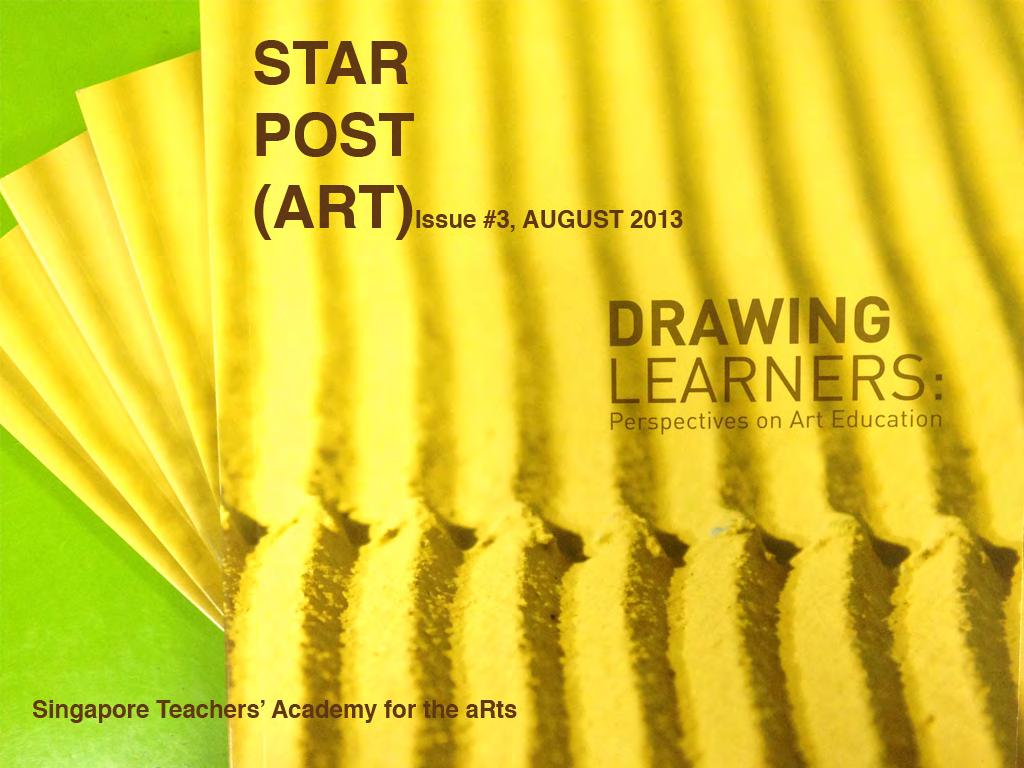

Highlights from AEC-ASPMER Conference
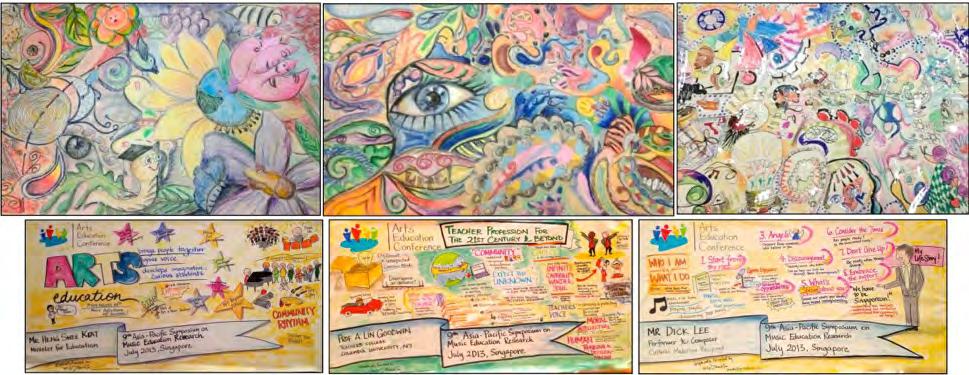
Top row: Artwork created by art teachers during one of the conference’s workshop ‘Building Community Through Murals’ Bottom row: Graphic record of Education Minister’s speech and keynote addresses on 17 July
AEC-APSMER Conference
To colleagues who have attended AEC-ASPMER conference, we thank you for contributing to its success. We hope you had enjoyed the conference, forged new friendships, exchanged knowledge and experiences with like-minded arts educators, and benefitted from the stimulating presentations from local and overseas pedagogues. We hope the conference posed questions that inspired reflection and that you would share these insights with your colleagues who were unable to attend the conference.

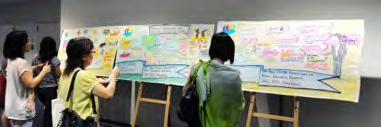
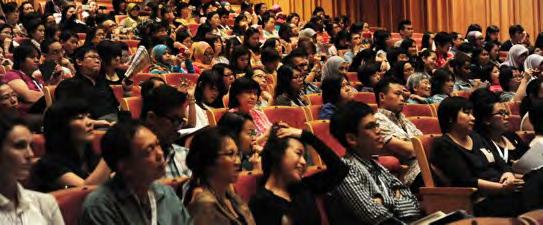
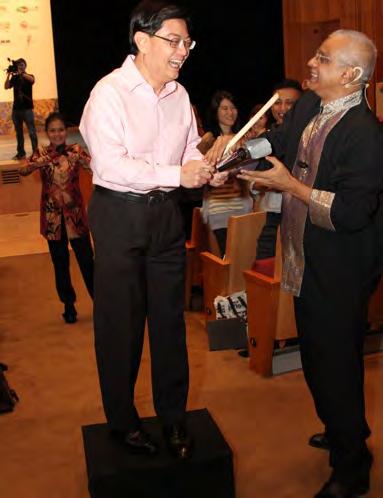
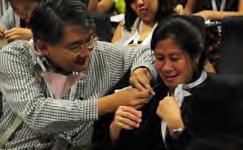



In this issue of STAR POST, we are presenting one art teacher’s personal takeaways from the conference in a graphical manner.
Mr Tay Li-Cheng from First Toa Payoh Secondary School had captured salient points of the keynotes through these wonderful ‘sketchnotes’.
Should you have takeaways you would like to share with the fraternity too, drop us an email (grace_kwa@moe.gov.sg) or post it on our Facebook closed group, a|edge. Full papers are available download and the closing video can be viewed at STAR’s website (http://www.star.moe.edu.sg/). More photographs and video of Olivia Gude’s keynote address will be made available shortly.
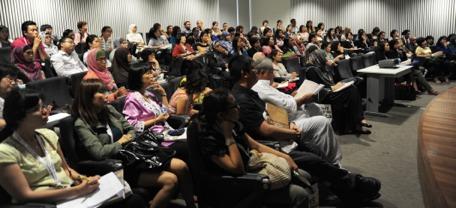
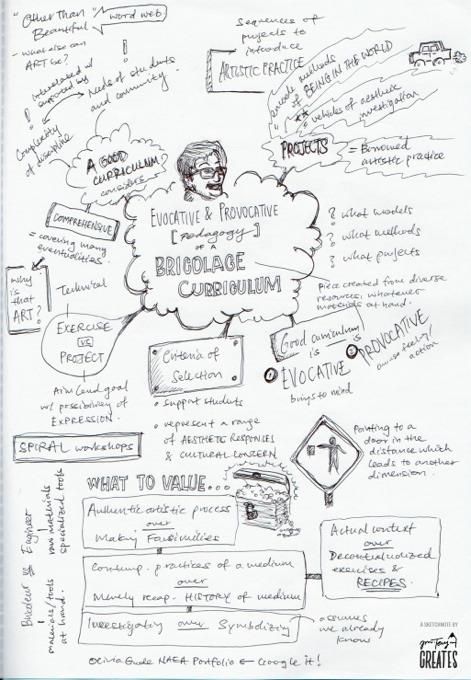
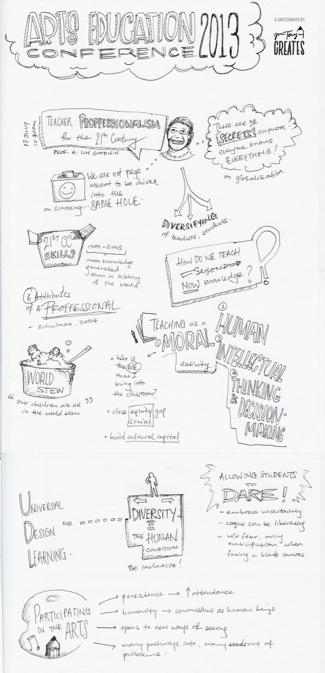
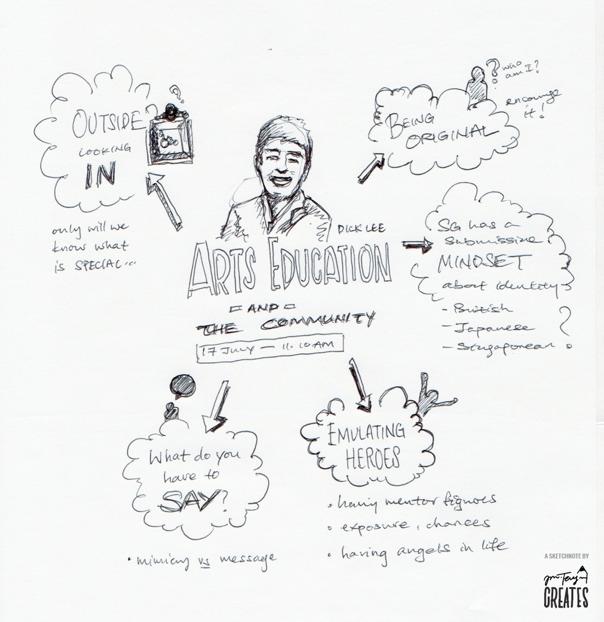

LESSON IDEAS
Home
By Grace Kwa, Programme Manager, STAR
Purposes of homes
An art making activity centred on the theme ‘Home’ was designed for teacher participants. They were shown images of homes as observed in nature such as a snail carrying its own shell, bees hovering in and out of their hive and unhatched eggs in nest. From these imageries, participants established that homes are used for shelter, safety, rest, storage of food, starting a family homes and so on.
Participants were than prompted to think about the similarities of the function of home between the animal kingdom and the humankind. Most participants felt that homes carried a personal meaning beyond functional, everyday needs. Homes are personal and private spaces where we could be ourselves; homes are storage of memories and treasured relationships with the people we love; homes are a manifestation of our own tastes and preferences.
Art Discussion
To take the exploration on the theme further, an art discussion activity was introduced. On separate post-it pads, participants were asked to ‘Write down a word or short phrase that you associate with the idea of ‘home’. It could be good or not so positive things that come to mind.’ Participants came up with ‘home sweet home’, ‘nagging’, ‘oasis’, ‘isolation’, ‘boredom’ and ‘hiding place’. Seated in groups of 7-8, participants were then instructed to:
1. Consolidate these words/phrases as a group
2. Discuss the artworks given to your group
3. Match words/phrases to the given artworks as deemed appropriate
Each group was then presented with artworks related to ‘home’ made by different artists, and without knowledge of the artists’ background, participants used their storage of words/phrases to match to the corresponding visuals. This is to encourage interpretation through observation of the artworks without being too preoccupied by prior knowledge about the artists’ intention. Works by Rachel Whiteread, Andrea Zittel, Arthur Bishop, Xing Danwen and local artists Michael Lee and Guo Yixiu were discussed.
Less positive words like ‘isolation’ and ‘household chores’ were associated with Zittel’s functional designs of minimal living spaces. The storage of words provided a starting point for participants to access the art works, as they tried to match words/phrases with the given images resulting in lively discussions. While Zittel’s designs like 1994 A-Z Living Units are intended to control spaces to make life easier as well as to offer solace as ‘escape vehicles’1, many saw the living units as lacking in personality. These interpretations of the works, though not totally aligned to the artist’s intent, were no less valid.
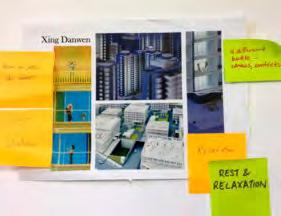
Initially, most participants in one group associated Xing’s works with the idealised notion of modern day living - comfort, well-manicured rooftop gardens, stunning balcony views. However, a group member pointed out some disturbing scenes in Xing’s photographs such as a body lying by a pool of blood, and a couple in conflict. The conversation took a turn and members started to discuss how society often falls victim to pursuing idyllic imageries of lives painted by commercial agencies while the reality of ‘home’ is indeed so much more complex.
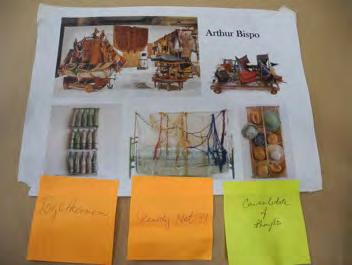
Terry Barrett, a renowned art educator and advocate of art criticism in schools, believes that artworks should have multiple meanings. As viewers, we bring with us experiences and knowledge that influence the way we look at things. These perceptions are equally valid as long as we can find substantiation through the artwork. ‘The meaning of an artwork should not be limited to what was intended by the artist. Its meaning might be much broader than even the artist knows.’ But Barrett also cautioned that not ‘anything goes’ but that ‘good interpretations have coherence, correspondence and inclusiveness. A good interpretation should be a coherent statement in itself and it should also correspond to the artwork.’
Enduring Understanding and Guiding Questions
The enduring understanding that a home is a familiar place for each one of us and it can bear different meanings and purposes was established at the end of the discussion. Participants said that it is not just material possessions that make a place ‘home’ but also relationships with people in the home and memories attached to the place.
The guiding questions that form the premises of the art tasks that followed are:
Why are homes important?
What makes a good home?
What makes a place ‘home’?
A context-sensitive approach relates the taught content to learners (teacher participants in this case), and presents issues that are meaningful and empowering. It allows learners to explore issues that are relevant and evocative to them. It allows them to think and reflect on issues of which they have something to communicate about and to use art as an authentic vehicle for expressing personal thoughts and ideas.
A person when encouraged to address the important issues of their life, in their moment and place in history, will express themselves with fullness, wisdom, and clarity (London, 2004, p.1 ).
Lesson design that nurtures students’ voice, allowing them to find expression through art making, is crucial. Students entering adolescence often struggle to find their place in the world. They are perceptive and can formulate meaningful opinions on matters they hold dear. They grow, discover their own voices and desire to be heard.
Knowing how to use artistic creation as a form of expression gives them one more tool in assisting their physical, social and emotional development, helping them to heal and grow into mature adults who are able to communicate their most personal thoughts and ideas. (McComb, 2012, p.302)
Allow me to cite an example to illustrate the importance of designing lessons that nurtures students’ voice: painting a colour wheel may not enhance students’ appreciation for colour relations. While students can paint a palette of colours, they may not understand how complementary or analogous colours might be vaguely important. Perhaps colour appreciation should not require tenuous links or arrive at a confounding absolution (i.e. red = anger, blue = moodiness). Instead, students could be given a chance to discuss why Facebook’s logo is white and blue or how colour filters featured in Instagram enhances their otherwise lacklustre images.
The Art Task
Participants were divided into Group 1 and 2. Group 1 participants attempted Art Task 1 while Group 2 participants attempted Art Task 2.
TASK 1: Create a sculpture reflecting your thoughts about ‘home’.
Apart from your personal perspective about home, possible extension includes:
- Reference made to current issues of overcrowding, influx of foreigners, rising cost of living, pollution
- Examining ‘home’ as a wider concept to include community and one’s country
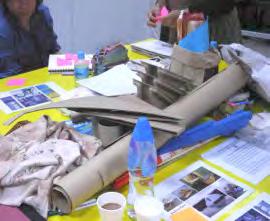
While Task 1 is deliberately left to be very open, Task 2 had a few constraints. Participants later reflected on how the lack of or presence of constraints imposed or aided their art making.
Classroom Set-up
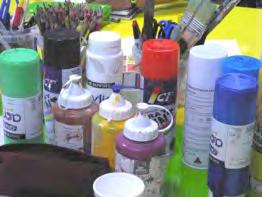
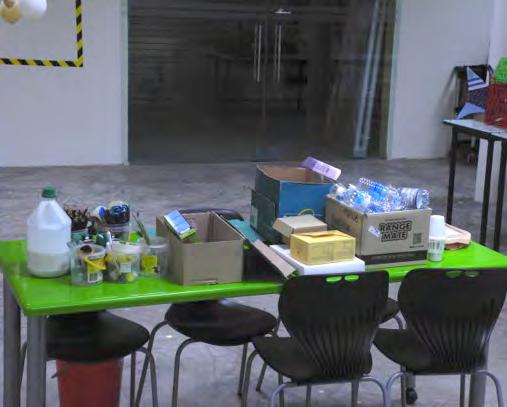

The classroom was divided into 3 art stations providing different types of art materials. Station A had more natural and fibrous materials like different types of papers, fabric, leaves and branches and threads. Station B contained different types of paint from acrylic to spray paint and various application tools such as brushes, palette knives and ink droppers. Station C had metallic and plastic materials like aluminium cans, wires, plastic bottles and so on.
TASK 2: Create a sculpture
- Expressing your idea of a good home
- No bigger than 30cm x 30cm x 30cm
- Using a container as a base
- And materials provided in only 1 of the chosen art stations (Participants have to choose if they were using materials in Station A, B or C)
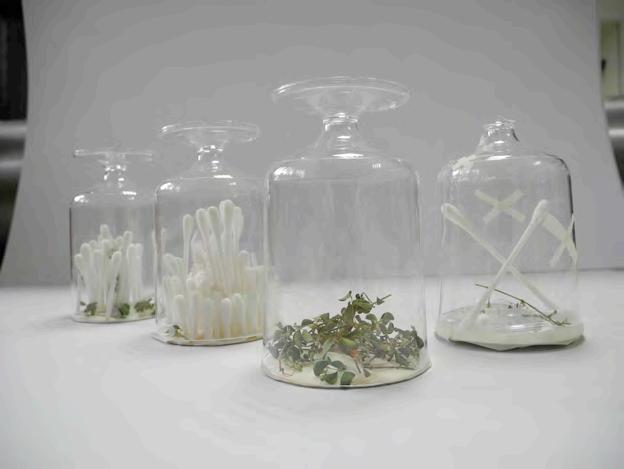
Ms Mak Wai Leng, Naval Base Primary School

There was also a common pool of materials consisting of glue, paper, pencils, scissors and penknives, which participants were free to access at any point of the workshop.
Workshop Participants’ Reflection on the Art Task and Classroom Set-up
After the artmaking, participants reflected on some of the strategies used in this art making session which is the use of ‘enabling constraints’ and the use of art centres to develop a choice-based art education.
Task 2 had a few constraints such as the specificity of the theme, dimensions and use of materials, while Task 1 is left more open. Not all students may be ready to tackle an ‘open’ problem, and daunted by endless possibilities, students who are not as mature in their artistic journey may fall back on creating what they are already good at and familiar with. This is where constraints, be it limitation of

Home is a comfort haven which you can escape to from a chaotic and stressful world. A place of comfort and cosiness with your loved ones.
Mrs Gwen Tan, Kranji Primary School
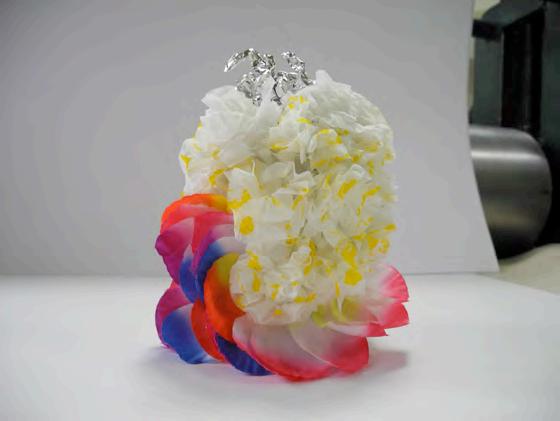
Ms Guo Xuanyun, Xingnan Primary School
materials used, format of the final product, style of representation and specificity of idea, can be enabling as it helps to scope the works’ area of focus and force students to find creative solutions around these constraints.
The use of different art stations echoes an approach commonly seen in a Teaching for Artistic Behaviour2 classroom, where various media centres such as painting, collage and sculpture are set up like mini art studios. Students can move independently between stations utilizing materials as required for the execution of their art pieces. Resources such as instructional manuals, sample works, art books are available in the centres to further aid students’ exploration with the mediums located at the stations.
In this workshop, art books and videos related to the station’s mediums were made available for participants in search of inspiration. The use of art stations allows flexibility and provides choices where participants could consider how the materials and methods used for their artwork can further contribute to the work’s meaning. The provision of different materials
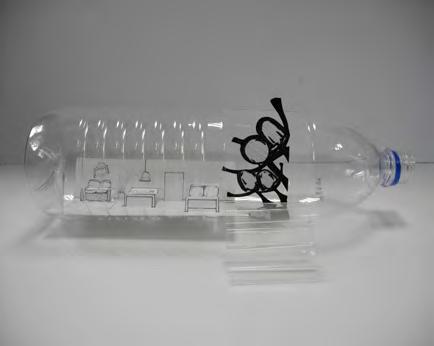
A good home. The first thought that came to my mind is my own home. What makes my home ‘a home’ is the completeness. Love and comfort is at home, with my loving wife and two children.
Mr Rahmat B Muhammad, Canberra Primary School
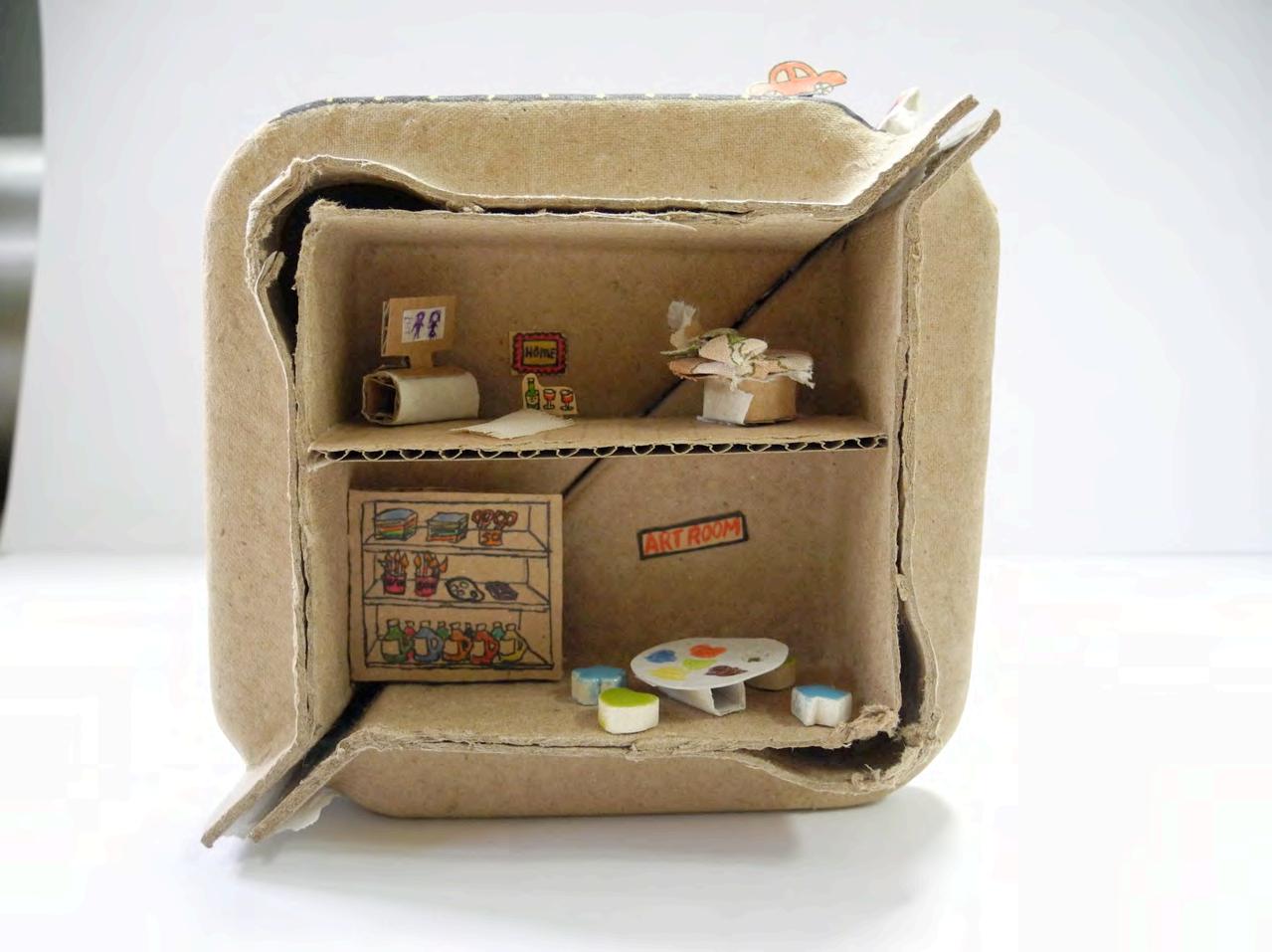
encourage participants to be curious investigators as they search for and construct meaning for their artworks through the handling of materials. Seated in stations, participants can learn from each other and the presence of resources also encourages self-directed learning.
However, teachers need to note that this might not be an ideal classroom setting until students are taught some ‘threshold skills’3 before they can flourish on their own. Before the resources could make any sense and before exploration and experimentation can take place,
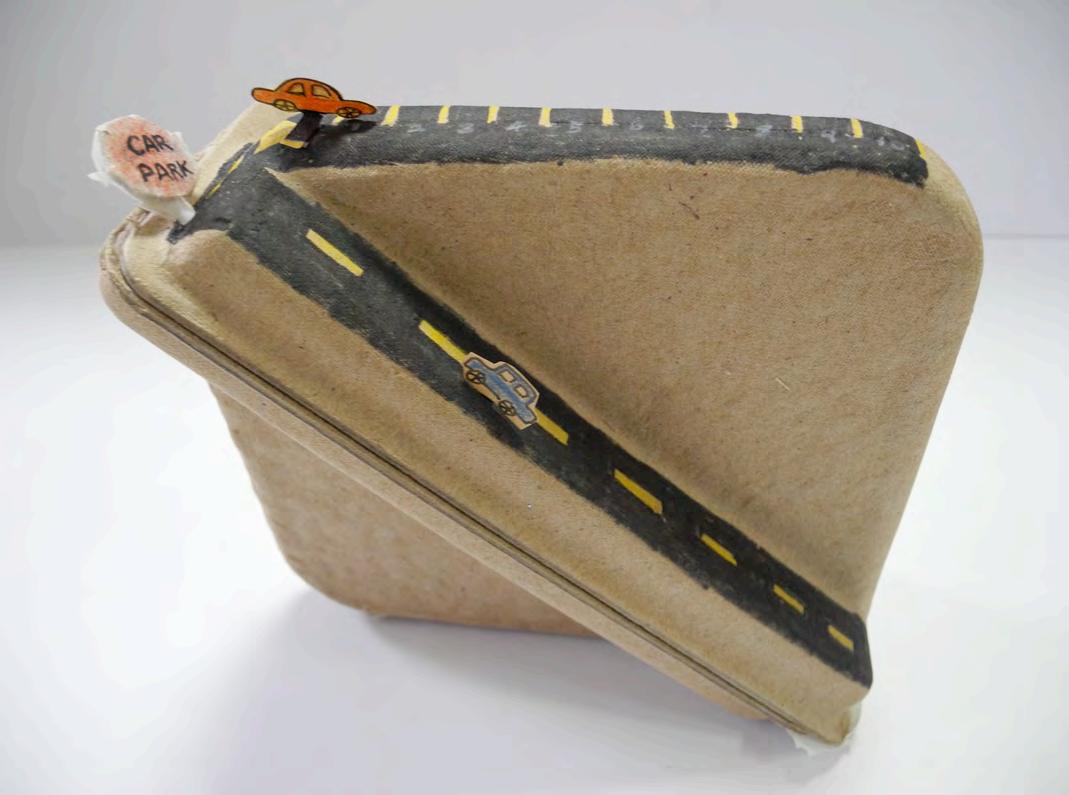
Home is a sanctuary where I relax and reflect on my thoughts. It is also somewhere I can be comfortable and do my art in peace.
Mrs Jess Low, Haig Girls’ School
students need to be equipped with some basic knowledge as to how the tools and materials can be used. Also, centres should be opened one at a time, as students demonstrate their readiness to handle more choices.
Committed holistic educators realise that they cannot address students’ comprehensive needs without developing their knowledge and competence by teaching them the skills and the content of the subject matter (Campbell & Simmons, 2012, p. 312).
Questions to Facilitate Reflection IN Action and
Reflection ON Action
To conclude the workshop, participants were asked how they could design meaningful reflection questions for their students such that students take time to reflect on their art making processes and not just ponder over the meaning of their finished art works. Here are some examples:
- What was one new material/technique that you tried and how did it surprise you?
- What challenges did you face and how did you overcome it?
- What changes or refinements would you make if you could continue with this work?
London P. & The study group for Holistic Art Education (2004). In Towards a Holistic Paradigm of Art Education (Monograph 1). Maryland: Maryland Institute College of Art (MICA)
Barrett, T (1994). Principles for Interpreting Art. Art Education Vol. 47, p. 8 – 13. Reprinted in STAR (2012) .Drawing Learners: Perspectives on Art Education. Singapore Teachers’ Academy for the aRts. pp. 124 – 130.
Footnote
1. www.zittel.org/work.php ,http://www.guggenheim.org/new-york/collections/ collection-online/artists/bios/8244
2. http://teachingforartisticbehavior.org/tab-practice/opening-centers/
3. Richard Hickman (2010) Why We Make Art and Why It Is Taught, UK: Intellect, p.32
References
McComb C. (2012). Cultivating a Healing Classroom Environment. In Campbell L. H. & Simmons III S. (Eds) (2012). The Heart of Art Education. USA: National Art Education Association. pp. 297 - 303.
Campbell L. H. & Simmons III S. (Eds) (2012). The Heart of Art Education. USA: National Art Education Association.
LESSON IN FOCUS
Appropriation – Recreating Paintings using My Smartphone
A Lesson Plan by Mdm Fatimah Sawifi
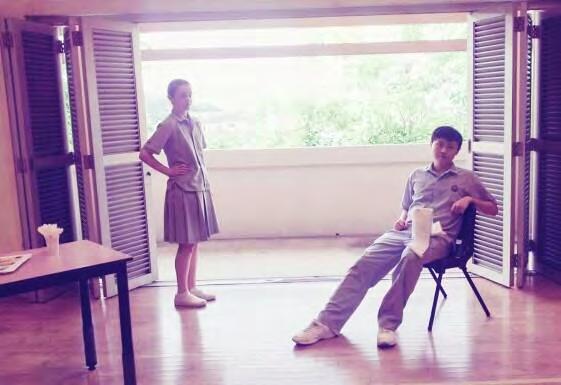
With the flourishing art scene in Singapore that sees many galleries/museums presenting artworks of renowned and emerging artists, many art teachers are exploring creative and meaningful ways to integrate the Study of Visual Art (SOVA) with studio practice. Here’s one lesson idea that demonstrates how SOVA is really part and parcel of teaching good studio practice. This lesson plan by is refined from a taught lesson on appropriation and photography that wowed our British visitor, Dr Richard Hickman during a lesson observation. Trawl the internet using a search engine to find the original artworks to see how students had appropriated the paintings in a creative and witty fashion!
Appropriation – Recreating Paintings using My Smartphone
15 mins : Introduction
• Recap Feldman’s Approach to Art Criticism.
• Introduce Appropriation to pupils.
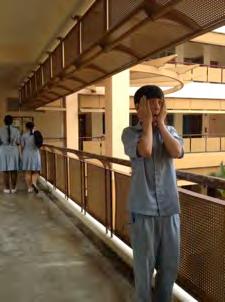
Appropriation in art is the use of preexisting objects or images with little or no transformation applied to them. In this lesson, students will reconstruct famous paintings using photography by mimicking the characters and recreating the paintings’ setting.
• Assign groups of 4s to pupils, based on higher, mid and lower abilities.
• Assign pupils with art task:
In groups of 4s, pupils are to appropriate designated artwork using photography as the medium. Chosen equipment : handphone camera. They then will have to present their work in comparison to the original work, using Feldman’s approach.
15 mins : Lesson Development: Examining an Artwork
• In groups, pupils describe, analyse and interpret the given art work.
- What do you see in this art work?
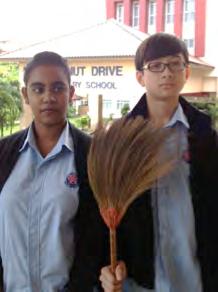
After Wood, American Gothic, 2013, Class of 3C, Photography
-What elements/principles are incorporated into the work? How?
-What is this artwork about?
30 mins : Lesson Development: Reconstruction of a Painting
• Pupils to leave the classroom to find suitable setting, props and lighting as well as explore different expressions and postures to appropriate the given artwork.
• Group to send final work to teacher using “WhatsApp”
30 mins : Presentation of Group Appropriation
• Group to present their work through Feldman’s Approach.
• Teacher to highlight how in constructed photography, some factors to consider which could add meaning to the image would consist of:
- Setting (Location, Lighting)
- Props and Costumes (Make-up, Attire)
- Models’ Expressions, Activities and Postures
5 mins : Lesson Exit
• Summarise learning points and art vocabulary.
After Munch, The Scream, 2013, Class of 3C, Photography
REFLECTIONS
2013 STAR Senior Teacher (Art) Milestone Programme
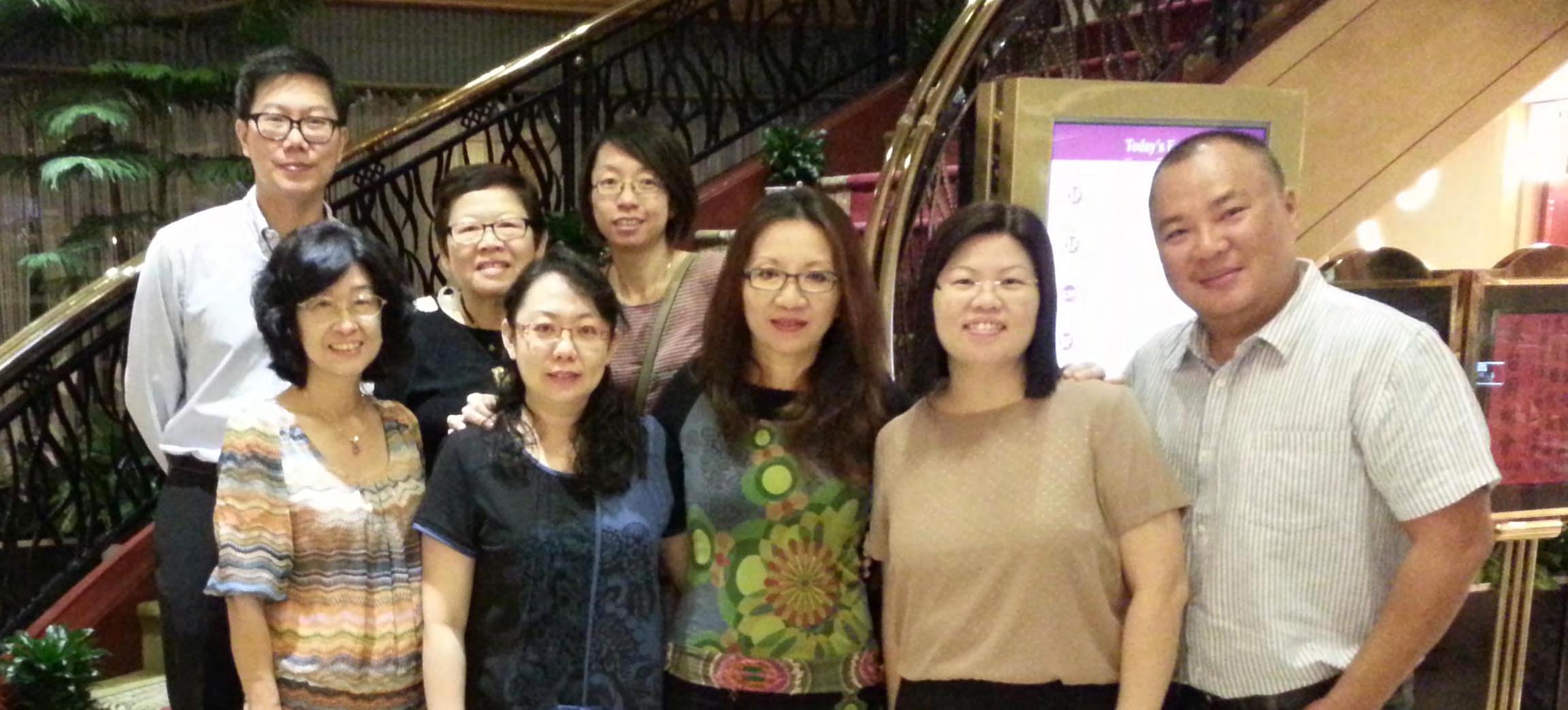
As part of STAR’s Senior Teacher (ST) Milestone Programme, a professional development trip took place in May this year to provide a changed context for teachers to reframe their assumptions and practices, providing opportunities for deep reflection. Seven Art STs came onboard the programme and visited Taipei Municipal Fuxing Senior High School and Taipei Municipal Minzu Elementary for lesson observations and dialogue sessions with experienced Taiwanese art teachers. Here are some of extractions of their reflections.
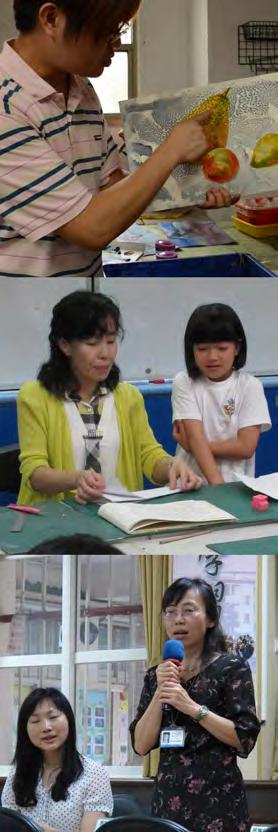
From Charlotte Tan, ST(Art), CHIJ Toa
Payoh
“If the learner has not learnt, the teacher has not taught. We can make learning relevant and visible for the students by designing meaningful art projects. In Fuxing Senior High School, the safety helmet project where students designed a safety helmet to ride home communicates the safety message in a fun way.
Another empowering project involves improving the aesthetic environment by allowing the students to submit their design proposals for the conversion of communal areas in the school. The winning submission will see the work being materialised with school’s funding.
I am very impressed by the sense of professionalism and great passion for art and art education in the teachers we met on this trip. To value add to the learning platform, we could put in the ‘Art Education and Life’ aspect in our curriculum. This would give students a more complete art education, a deeper understanding into the processes of art making and how art can enhance our lives.”
From Eileen Ong, ST(Art), Northbrooks Secondary School
“This trip has been an eye-opener for me. It helps me to see many possibilities in the teaching of art and makes me rethink about my own teaching and learning. A common thing that I observed across the schools is that the teachers will usually show the students a lot of visual images and artists’ works to give students ideas and provoke
their thinking before the actual art making process. In the art making process, their students displayed very strong personal responses in their work. I am also greatly inspired and motivated by the people I met and with this new found knowledge and energy, I hope to work with our Senior Teachers to contribute to our Art fraternity in Singapore.”
From Chia Wei Hou, ST(Art), Raffles Institution (Yr 5-6)
“We often urge students to consider models to emulate and to learn from in order to improve ourselves; we encourage them to take the chance to shift their perspectives and paradigm so as to attain a breakthrough in thinking. Shifting our perspectives and learning from a good model is what we did during this study trip. We came back with many questions, answers, and most importantly, many invaluable insight into art education, into our own practice as a teacher, into our own identity as an art educator. There will not be any practice without reflection; there cannot be any reflexivity without a sense of application. We learned; and we learned a lot during the schools visits during this study trip.”
From Mrs Yee-Tan, ST(Art), Greenridge Primary School
“This is a very fruitful learning trip for me. Though there are some similarities in social and culture, the driving force behind the educational system is different from Singapore. I learn some teaching strategies used in their art classrooms. I also begin to appreciate our Professional Development opportunities made available for teachers in Singapore more. ”
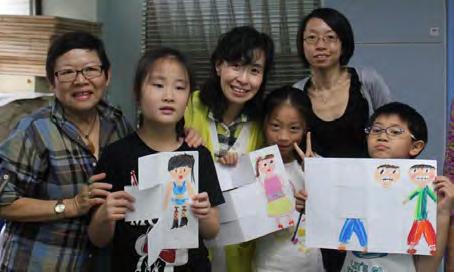
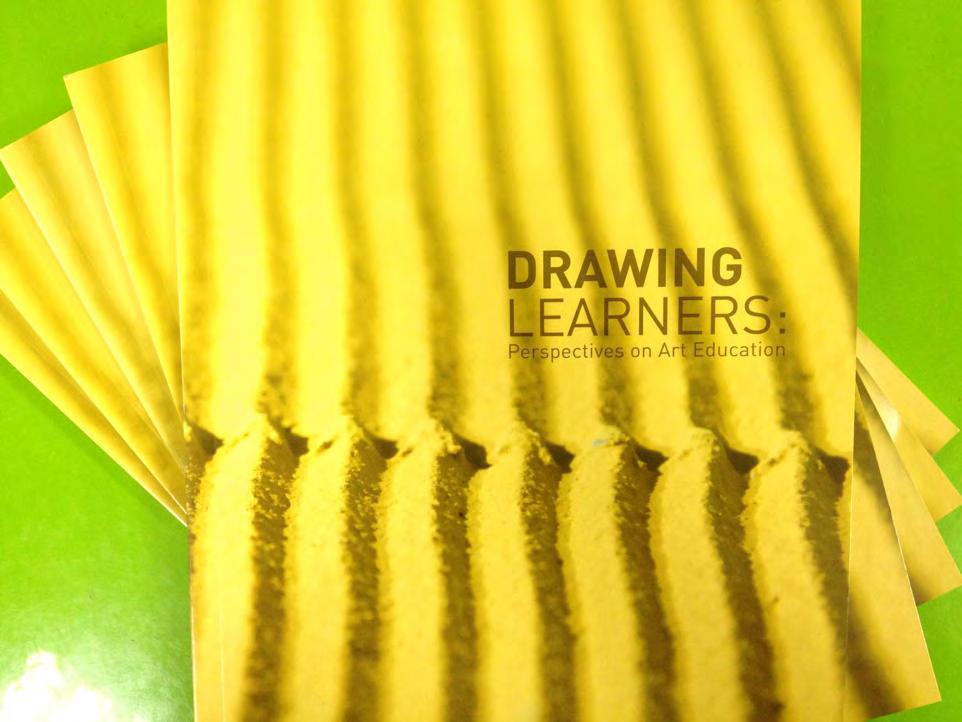
Drawing Learners
Combined Clusters Art Workshop
In August and September, our STAR Champions (Pri) will be conducting student-centred art workshops as well as presenting pedagogical exhibitions at the hosting schools in the respective zones. Combined Clusters (EAST) Art Workshop just concluded on 14 Aug, participants took home beautiful art works and tips on conducting Printmaking, Fabric & Paper-based and Digital art lessons. They also took a closer look at some student-centred lessons presented at the pedagogical exhibition.
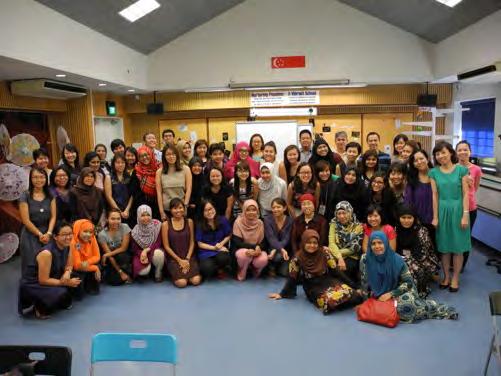
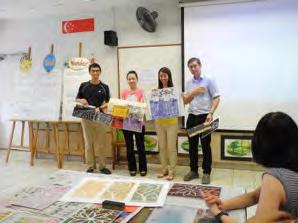
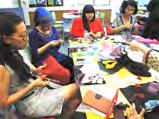
Coming up! If you are a primary school art teacher from the following zones and have yet signed up for the respective workshops, you may still access the following links for registration by 26 Aug. However, as there are limited vacancies, a confirmation email would be sent to you upon successful registration.
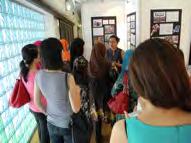
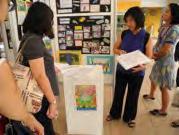
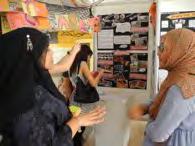
Combined Clusters (SOUTH) Art Workshop, 2 & 3 Sep, 1430 – 1745h, Jing Shan Primary School
Click here to sign up!
Combined Clusters (WEST) Art Workshop, 2 & 3 Sep, 1430 – 1745h, Zhenghua Primary School
Combined Clusters (NORTH) Art Workshop, 29 Aug, 0830 – 1630h, Rosyth School
Click here to sign up!
Click here to sign up!
Artist Mentor Scheme (AMS)
Do you wish to learn a new art medium? Would you like to offer your students a different art experience but you are unsure how to go about doing it? Find out how you can do this through the Artist Mentor Scheme (2013)!
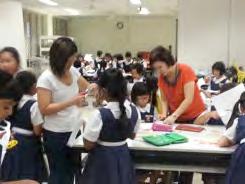
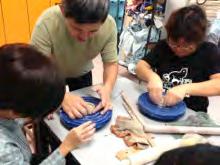
Right: Mr Chua Soo Kim, mentoring art teachers from Maha Bodhi School, the basics in hand-building pottery techniques
Left: Teachers and Primary 3 students at Paya Lebar Methodist Girls’ School (Primary) learning the techniques of simple printmaking with artist Ms April Ng
What is it?
In line with recommendations from the Arts & Culture Strategic Review (ACSR) and the Pre-tertiary Education Masterplan for Arts and Culture, AMS aims to enhance teachers’ capacities to provide our young with opportunities for exposure to the arts and culture through high quality instruction.
The scheme aims to develop Art/Music/Dance/Drama teachers’ competencies:
• by engaging practitioners in specialised areas to co-teach in these areas (e.g. specific art media, music traditions) to achieve curriculum goals; and
• to conduct and/or plan their art and music CCAs and Programme for Active Learning (PAL) through short term co-teaching arrangements with arts practitioners.
The scheme involves:
1. Learning a specialised art form/medium from an artist
2. Co-designing and planning a curricula/CCA/PAL lesson with an artist
3. Co-teach with an artist
Highlights of the Scheme
- Learning from a reputable, experienced practitioner
- Flexibility of programme (teachers to propose programme, co-design and plan lessons with artist mentor)
- Professional Development for art teachers at your school
- 80% subsidy would be given for each approved project
We are providing another window for 2013 applications from now to mid-Sep if teachers are interested to take up the scheme for Term 4 this year. Please visit STAR’s website http: (www.star.moe.edu.sg/ resources/arts-education-resources) or contact Ms Tan Bee Ngoh (Tan_Bee_Ngoh@moe.gov.sg) for more details.
If you are hoping to take up the above scheme next year, do start planning soon. Artist-Mentor Scheme 2014 and Arts Pedagogical Research Fund 2014 application forms are also available from the above link.
Looking into In/Sight
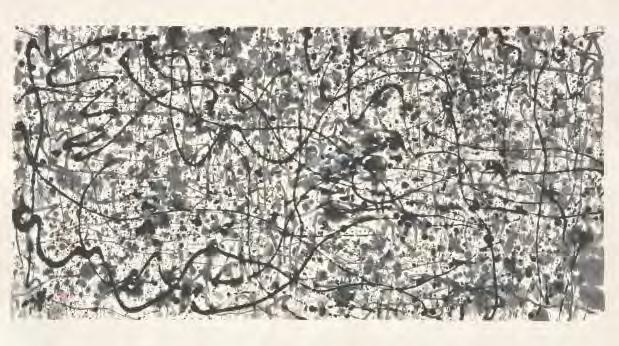
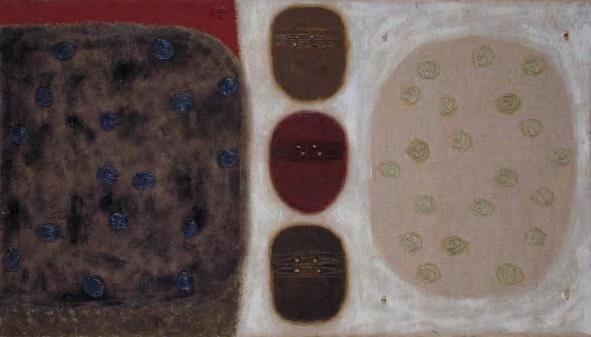
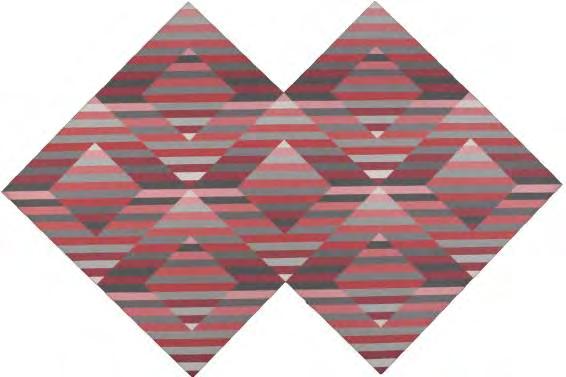
Date & Time: 18 Sep 2013 (Wed), 1500h, Venue: Wu
Guanzhong Gallery, Gallery 3.7 and 3.8, Singapore Art Museum
Find out more about the various abstract works created by artists in South East Asia and how these could be seen in relation to Wu
Guanzhong’s famous abstract Chinese ink paintings. Through this intimate and perceptive curator’s walk co-organised by STAR with
NAGA, discover and examine the different, and occasionally similar, ideologies and cultural contexts that inspire such beautiful abstraction in the artists’ works. The exhibition also features local artists Anthony Poon, Ho Ho Ying and Chua Ek Kay, a good starting point for discourse on abstraction within Singapore.
Click here to sign up via OPAL (login required)
Images courtesy of National Art Gallery (NAGA), Singapore
From left: Wild Vines with Flowers like Pearls (detail) by Wu Guanzhong, Struggle for Life (detail) by Tran Luong, Twi-Forma by Anthony Poon
a-edge 2014
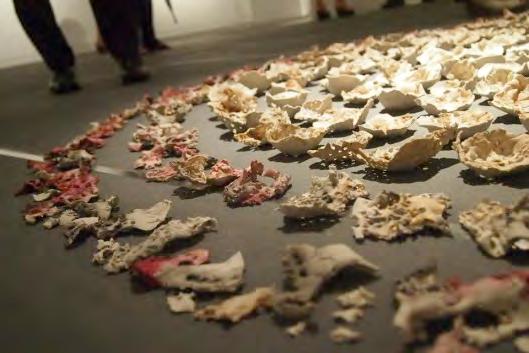
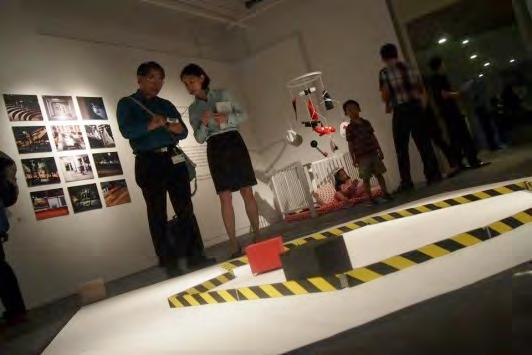
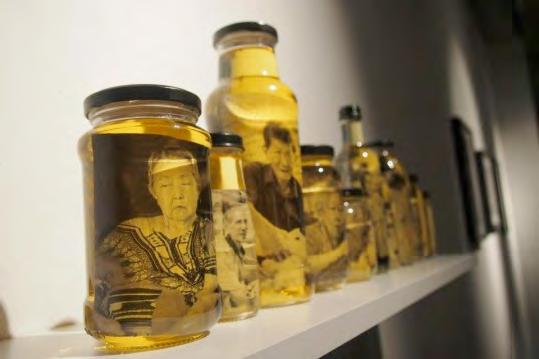
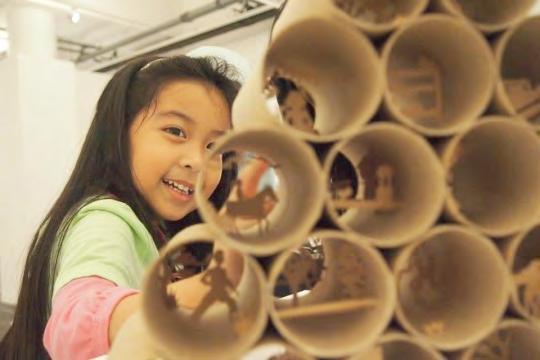
a | edge, an acronym for ‘Art Educators’ Developmental & Generative Explorations’, is an annual art exhibition that aims to encourage Art teachers to sustain and continue to hone their art practice and enhance the professional excellence of the collective fraternity of art educators. Since 2011, the exhibition theme was set using graphical symbols and punctuations to convey the ongoing conversations within the fraternity. In 2011, a graphical forward slash ‘/’ was used to provoke teachers to reflect about keeping a balance between their own art practices and teaching practices, and about questioning their ‘aesthetic’ edge. In 2012, we used ‘:’ to suggest dialogue, collaboration, conversations of dilemmas or ‘discursive detours’.
In the next installment of a-edge, the hyphen will be used as an exhibition trigger. Just as how a hyphen allows two or more
usually unrelated words to suggest a hybrid idea, we encourage teachers to tackle subject matters that show combination, unification or evolution. When the hyphen is taken as a dash, it denotes a break for a parenthetical statement where concepts and comments can digress. In the light of this interpretation, we encourage teachers to digress from their usual practices; and/or to collaborate, working on a singular artwork or a small body of work. We welcome you to explore, discover and create an artwork that responds to the theme.
Do look out for further notifications on procedures for proposal submissions in September! This exhibition will likely take place in March 2014, and we look forward to your support.
a:edge 2013, Photographs taken by Maziyan Abdullah
